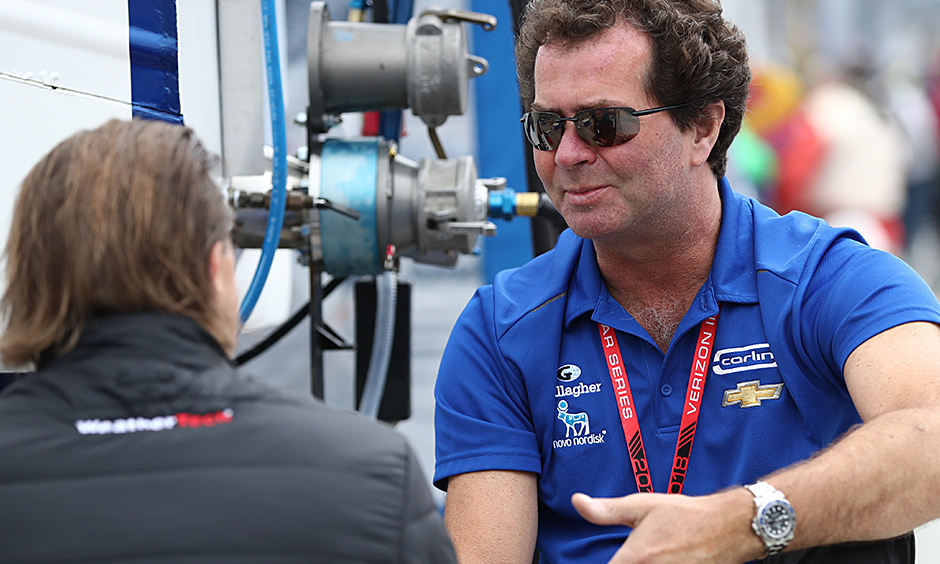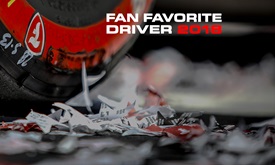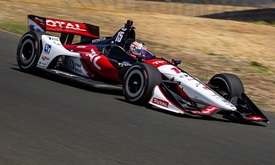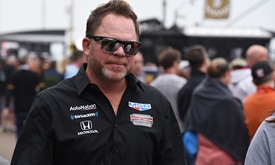Carlin believes team will be singing new tune soon
SEP 11, 2018
Not long after they wheeled the cars back to the paddock following the Grand Prix of Portland, the Carlin crew fired up the music and dug into cleaning and prepping for the next race.
It’s how this gang has rolled in its first year in the Verizon IndyCar Series. Whether it was a great day or a rough one, the music rarely stopped.
“We’re a young team,” team principal Trevor Carlin said. “These guys work 18 hours a day, 48 weeks a year. We need some entertainment. Even myself, I can’t work in an atmosphere without music. Now, sometimes they go a bit too high tempo for me. But I’m pretty varied and I subject them to my ’80s disco on occasion.”
Music has been one of the more pleasant constants in a season that, by Carlin’s admission, became tougher than expected for his two-car team. Driver Charlie Kimball has finished in the top 10 six times, his best a fifth place in the Honda Indy Toronto. Max Chilton’s best finish was 11th in the second race of the Chevrolet Detroit Grand Prix presented by Lear.
“It feels like we’ve been in a war zone, to be honest,” Carlin said.
Carlin has fielded teams with great success more than 20 years in Europe and United Sates open-wheel development series, winning 24 championships, including the Indy Lights presented by Cooper Tires title in 2016 with driver Ed Jones. Carlin saw 2018 as a good year to step up to the Verizon IndyCar Series because the challenge would be more even for all teams with the introduction of the universal aero kit. To a degree, that’s how it played out. The high quality of the teams across the series, though, has been daunting.
“Over the course of the last few years, the standard of the drivers and teams keeps improving,” Carlin said. “While it was good to come in with a new aero kit, it also is a time when the series is at its most competitive. Look at how close the qualifying times are and how close the race times are. We are still missing probably 5 percent of our performance, and that’s just too much in a championship this competitive.”
The Portland race was a perfect example. All 25 cars qualified within a second of each other on the 1.964-mile permanent road course, which leaves a team slightly short on performance no option but to race from deep in the field. But Carlin also sees the positive in that.
“In the same breath you have to say what a great job our team is doing to get within that one second, and then to pull off a seventh place (at Portland) with Charlie, we’re there,” he said. “That last bit to get on the (podium) is really tough. But every championship we’ve done has been tough to start with and we’ve always prevailed. I have faith in this bunch of guys.”
Carlin says the steepest part of the learning curve is the variety of tracks in the series – superspeedways, short ovals, road courses and street courses.
“You’re never really getting into a rhythm running on the same type of circuit, especially at the beginning of the year,” he said. “That was the hardest part.”
Three road courses in the final five races – including the INDYCAR Grand Prix of Sonoma that closes the season on Sunday (6:30 p.m. ET, NBCSN and Advance Auto Parts INDYCAR Radio Network – helped the team find a groove. Kimball’s seventh-place finish at Portland was a nice boost of confidence.
“What I do is pretty simplistic,” Carlin said. “I look at the final timing sheets and look at the names of the teams that are ahead of us, and then I look at the teams that are behind us. We finished a second away from Simon Pagenaud (who finished sixth) in a Penske. We’re not a million miles away and we should be proud of what we’ve done. We don’t have the experience or the resources of Roger’s team, and to beat two of his cars and be close to the third one, that’s my benchmark – Mr. Penske.”
So where does the team, based out of Delray Beach, Florida, and essentially on a six-month road trip, find the 5 percent needed to reach the podium?
“It’s just experience and time,” Carlin said. “We chose to go our own route. The whole team is new to INDYCAR and we are making great progress. The problem this year is that everything was so late. We pretty much built a second car at St. Pete, and we’ve been on the road working ever since. We haven’t had a chance to catch our breath. But after Sonoma, we will be back to the shop, the guys will have a couple of weeks holiday and chill out. And then we’ve got five months to prepare the cars for next season. I can find 2 or 3 percent of the performance just over the winter in the shop.
“We’re still in that painful area, but we’re not that far off from getting it.”
When they do, the music will be on full blast. Even Trevor Carlin’s 1980s disco.



















